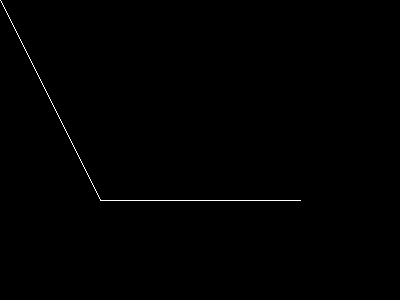In case you want to use an open polygon but are stuck with a PHP version prior to 7.2, a solution may be to 'backplot' your array to its original start. Say you have an array of pixels (below seperated by commas)
<?php
$arr = array();
for ($i = 0; $i < count($pixels); $i++) {
$pixel = explode(',', $pixels[$i]);
if (($pixel[0] > 0) && ($pixel[1] > 0)) {
$arr[] = $pixel[0];
$arr[] = $pixel[1];
}
}
imagepolygon($im, $arr, (count($arr) / 2), $otcolor);
?>
you can replace this by something like
<?php
$arr = array();
for ($i = 0; $i < count($pixels); $i++) {
$pixel = explode(',', $pixels[$i]);
$arr[] = $pixel[0];
$arr[] = $pixel[1];
}
// imageopenpolygon($im, $arr, (count($arr) / 2), $otcolor) is not possible, so...
for ($i = (count($pixels)-1); $i >= 0; $i--) {
$pixel = explode(',', $pixels[$i]);
$arr[] = $pixel[0];
$arr[] = $pixel[1];
}
imagepolygon($im, $arr, (count($arr) / 2), $otcolor);
?>
imageopenpolygon
(PHP 7 >= 7.2.0, PHP 8)
imageopenpolygon — Draws an open polygon
Beschreibung
Signature as of PHP 8.0.0 (not supported with named arguments)
Alternative signature (deprecated as of PHP 8.1.0)
imageopenpolygon() draws an open polygon on the given
image. Contrary to imagepolygon(),
no line is drawn between the last and the first point.
Parameter-Liste
-
image -
Ein GdImage-Objekt, das von einer der Funktionen zur Bilderzeugung, z. B. imagecreatetruecolor(), zurückgegeben wurde.
-
points -
An array containing the polygon's vertices, e.g.:
points[0] = x0 points[1] = y0 points[2] = x1 points[3] = y1 -
num_points -
Total number of points (vertices), which must be at least 3.
If this parameter is omitted as per the second signature,pointsmust have an even number of elements, andnum_pointsis assumed to becount($points)/2. -
color -
Eine Farbkennung, die mit imagecolorallocate() erzeugt wurde.
Rückgabewerte
Gibt bei Erfolg true zurück. Bei einem Fehler wird false zurückgegeben.
Changelog
| Version | Beschreibung |
|---|---|
| 8.1.0 |
The parameter num_points has been deprecated.
|
| 8.0.0 |
image erwartet nun eine
GdImage-Instanz; vorher wurde eine gültige
gd-Ressource erwartet.
|
Beispiele
Beispiel #1 imageopenpolygon() example
<?php
// Create a blank image
$image = imagecreatetruecolor(400, 300);
// Allocate a color for the polygon
$col_poly = imagecolorallocate($image, 255, 255, 255);
// Draw the polygon
imageopenpolygon($image, array(
0, 0,
100, 200,
300, 200
),
3,
$col_poly);
// Output the picture to the browser
header('Content-type: image/png');
imagepng($image);
imagedestroy($image);
?>Das oben gezeigte Beispiel erzeugt eine ähnliche Ausgabe wie:

Siehe auch
- imagepolygon() - Zeichnet ein Polygon